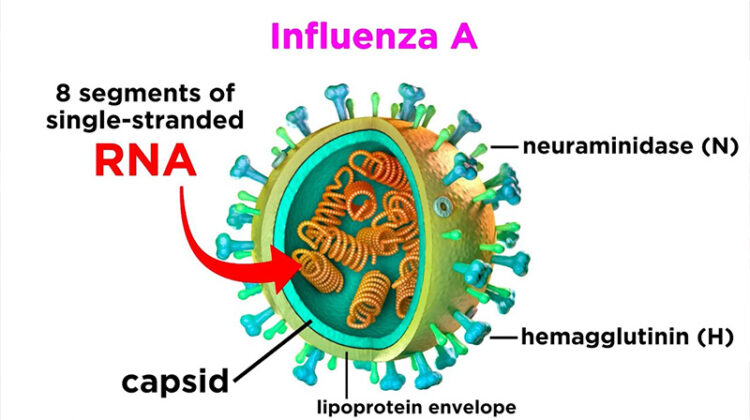
What is Influenza?
Influenza is a viral infection that attacks your respiratory system — your nose, throat and lungs. Influenza is commonly called the flu, but it’s not the same as stomach “flu” viruses that cause diarrhea and vomiting.
For most people, the flu resolves on its own. But sometimes, influenza and its complications can be deadly. People at higher risk of developing flu complications include:
- Young children under age 5, and especially those under 6 months
- Adults older than age 65
- Residents of nursing homes and other long-term care facilities
- Pregnant women and women up to two weeks after giving birth
- People with weakened immune systems
- Native Americans
- People who have chronic illnesses, such as asthma, heart disease, kidney disease, liver disease and diabetes
- People who are very obese, with a body mass index (BMI) of 40 or higher
Though the annual influenza vaccine isn’t 100% effective, it’s still your best defense against the flu.
Symptoms
At first, the flu may seem like a common cold with a runny nose, sneezing and sore throat. But colds usually develop slowly, whereas the flu tends to come on suddenly. And although a cold can be a bother, you usually feel much worse with the flu.
Common signs and symptoms of the flu include:
- Fever
- Aching muscles
- Chills and sweats
- Headache
- Dry, persistent cough
- Shortness of breath
- Tiredness and weakness
- Runny or stuffy nose
- Sore throat
- Eye pain
- Vomiting and diarrhea, but this is more common in children than adults
When to See A Doctor
Most people who get the flu can treat themselves at home and often don't need to see a doctor.
If you have flu symptoms and are at risk of complications, see your doctor right away. Taking antiviral drugs may reduce the length of your illness and help prevent more-serious problems.
If you have emergency signs and symptoms of the flu, get medical care right away. For adults, emergency signs and symptoms can include:
- Difficulty breathing or shortness of breath
- Chest pain
- Ongoing dizziness
- Seizures
- Worsening of existing medical conditions
- Severe weakness or muscle pain
Emergency signs and symptoms in children can include:
- Difficulty breathing
- Blue lips
- Chest pain
- Dehydration
- Severe muscle pain
- Seizures
- Worsening of existing medical conditions
Causes
Influenza viruses travel through the air in droplets when someone with the infection coughs, sneezes or talks. You can inhale the droplets directly, or you can pick up the germs from an object — such as a telephone or computer keyboard — and then transfer them to your eyes, nose or mouth.
People with the virus are likely contagious from about a day before symptoms appear until about five days after they start. Children and people with weakened immune systems may be contagious for a slightly longer time.
Influenza viruses are constantly changing, with new strains appearing regularly. If you've had influenza in the past, your body has already made antibodies to fight that specific strain of the virus. If future influenza viruses are similar to those you've encountered before, either by having the disease or by getting vaccinated, those antibodies may prevent infection or lessen its severity. But antibody levels may decline over time.
Also, antibodies against influenza viruses you've encountered in the past may not protect you from new influenza strains that can be very different viruses from what you had before.
Risk Factors
Factors that may increase your risk of developing the flu or its complications include:
- Age
- Living or working conditions
- Weakened immune system
- Chronic illnesses
- Race
- Aspirin use under age 19
- Pregnancy
- Obesity
Complications
- Pneumonia
- Bronchitis
- Asthma flare-ups
- Heart problems
- Ear infections
- Acute respiratory distress syndrome
Prevention
The influenza vaccine isn't 100% effective, so it's also important to take several measures to reduce the spread of infection, including:
- Wash your hands
- Avoid touching your face
- Cover your coughs and sneezes
- Clean surfaces
- Avoid crowds











